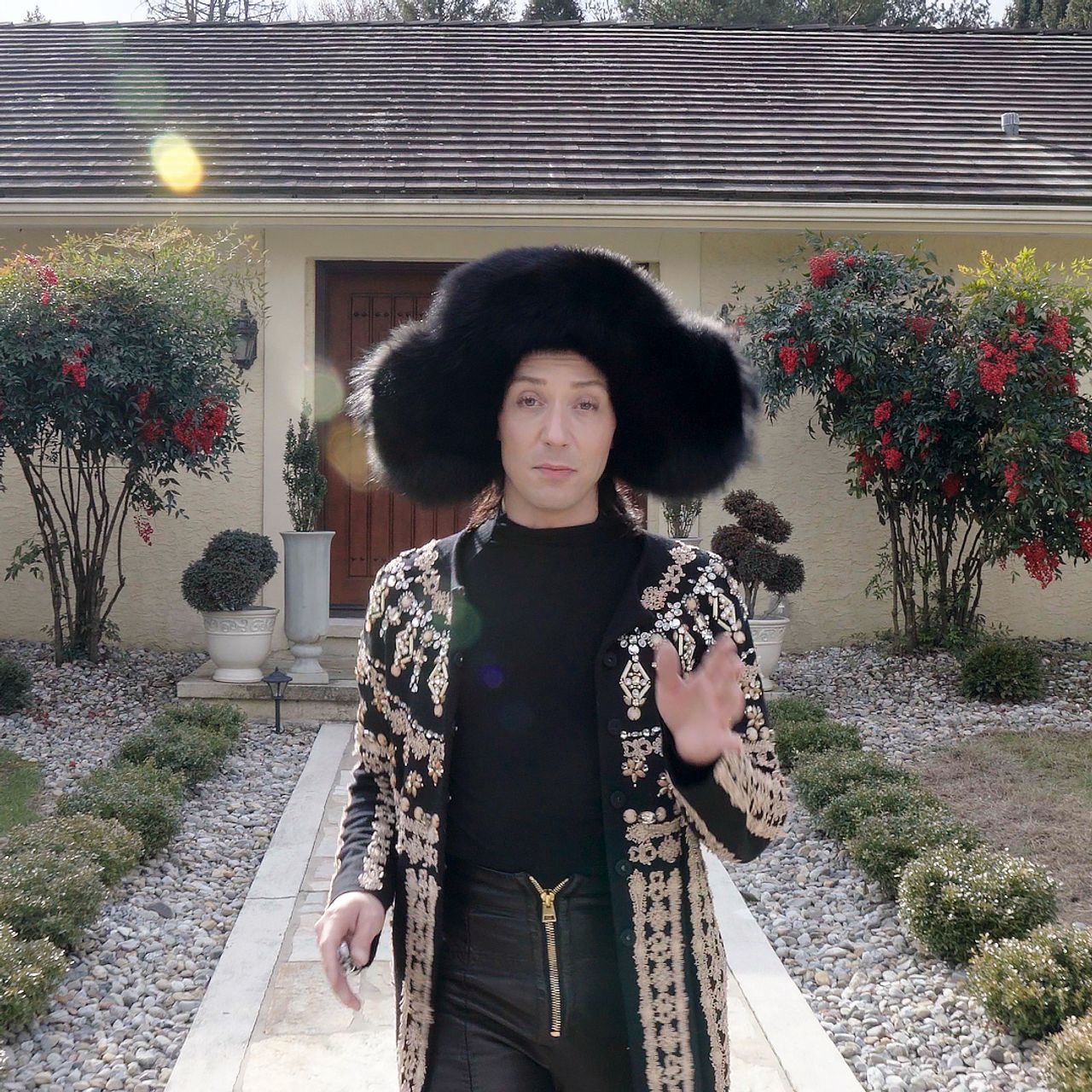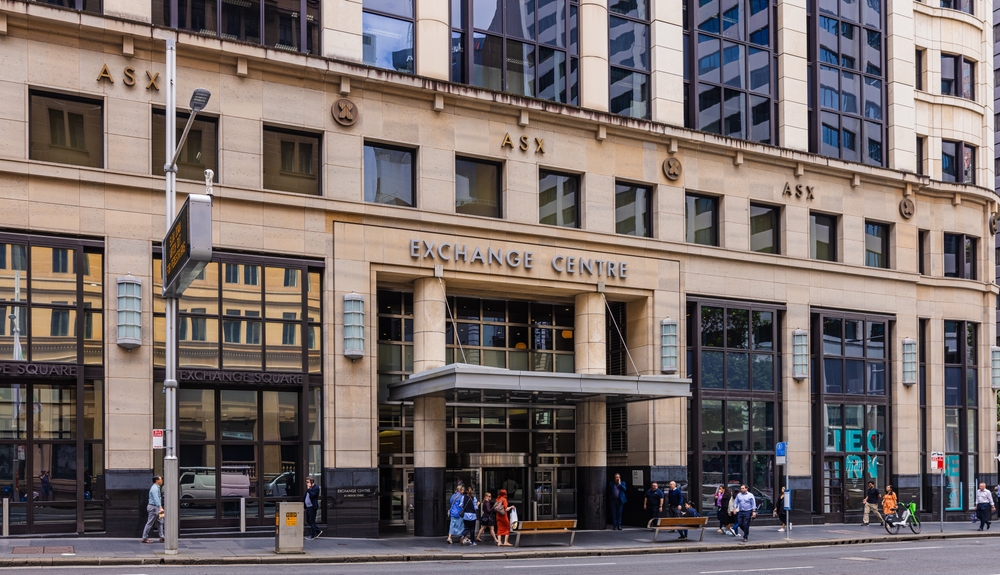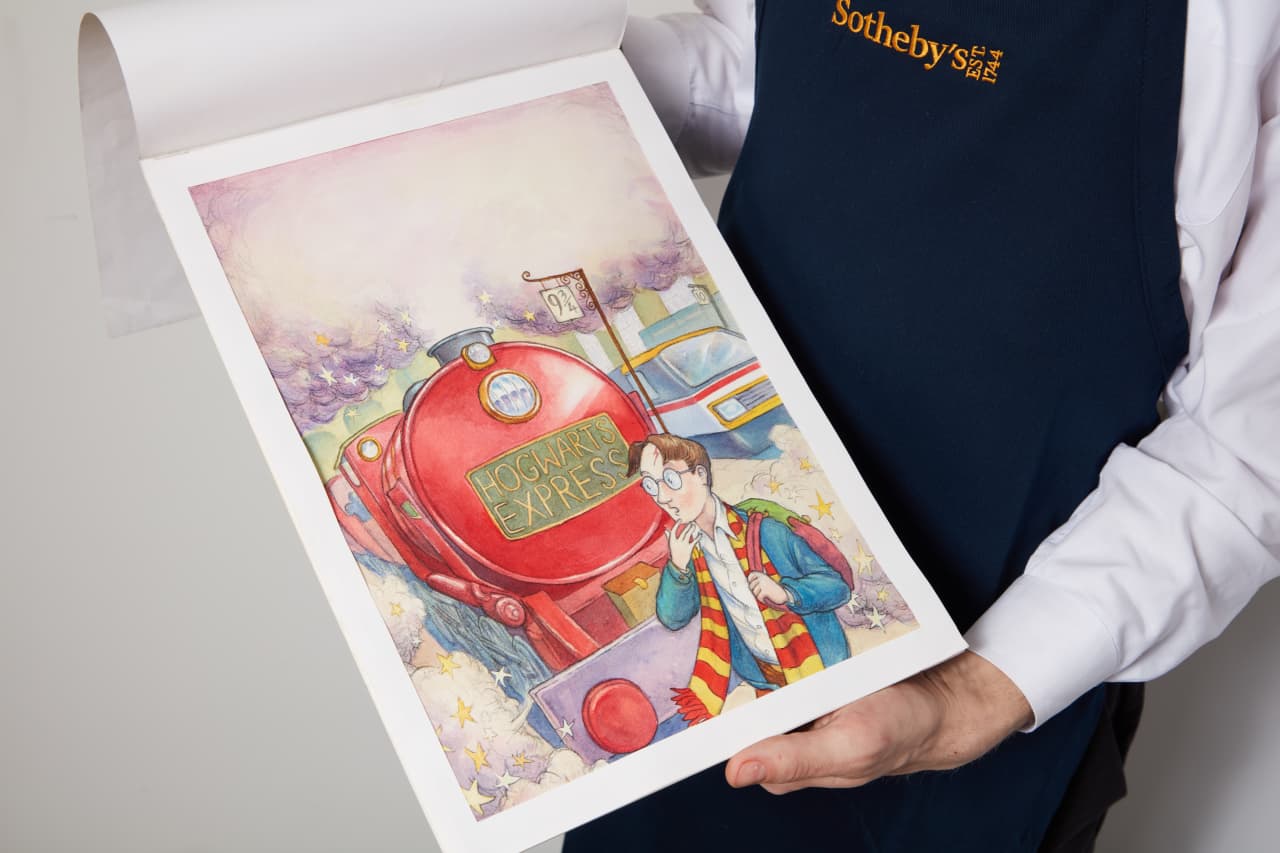MTV Cribs Makes Its Instagram-Era Comeback
The show’s creator says viewers will still show up to see ‘how the other half lives’.
Before there was Instagram, there was “MTV Cribs.”
These days, the internet is crowded with photos of pajama-clad celebrities lounging in their bedrooms. But when “Cribs” made its debut in 2000, the unscripted television show was one of the few ways fans could get a peek inside stars’ homes. MTV’s take on “Lifestyles of the Rich and Famous,” “Cribs” featured celebrities from Snoop Dogg to Mariah Carey giving self-narrated tours of their blinged-out homes.
Now, two decades after its original release, “Cribs” is back with a new season, which premiered August 11.
“‘Cribs’ was the blueprint for these real-estate shows and for celebreality, for the genre,” said the show’s creator, MTV executive Nina L. Diaz. One of the reasons for bringing the show back, she said, is that the public’s appetite for real-estate voyeurism has only grown since the original “Cribs” went off the air in 2010. “People just crave [seeing] how others live, and how the other half lives,” she said. At its peak, during Season 4 in 2002, the show averaged 1.6 million viewers per episode.
This season, viewers will get a tour of Martha Stewart’s 156-acre horse farm in Katonah, N.Y., where the sweater-clad lifestyle guru explains that there are seven houses on the property, along with three horses, 150 chickens and 14 blue canaries. In rapper Big Sean’s seven-bedroom, Mediterranean-style home in Los Angeles, there is a secret nightclub he inherited from the previous inhabitant, Slash of Guns N’ Roses. T.J. Lavin, the BMX rider and host of MTV’s “The Challenge,” shows “Cribs” viewers his backyard full of bike jumps.
One of this season’s participants is two-time Olympic figure skater Johnny Weir. Mr. Weir, 37, said he was a fan of “Cribs” growing up; favorite episodes included Ms. Carey and Nelly, who had a living-room fish tank, he recalled. “Most people of my age and demographic, we loved ‘Cribs,’ ” he said.
Located in rural Delaware, Mr. Weir’s circa-1950s home had Tuscan-style interiors when he purchased it in 2018. “Think of the Olive Garden—that’s what I moved into,” he said. When the “Cribs” crew arrived, he was in the midst of transforming the home’s interiors to Gustavian Swedish, or as he puts it, “the most beautiful little Narnian, Doctor Zhivago ice house.”
“My home is very, very white and gray and crystal chandeliers and nods to emerald green, which is my lucky color,” he said.
Shortly before the house was filmed for “Cribs” in January 2021—with the home’s white, herringbone-pattern floors yet to be installed—Mr. Weir left to commentate the U.S. Figure Skating Championships in Las Vegas. “There was no floor,” he said. “I was panicked that there wouldn’t be anything to show.” By the time he arrived home, luckily, the floors were complete.
Mr. Weir, who was known for designing his own skating costumes, said he did all of the home’s interior design, selecting every carpet and door handle. His closet, however, hadn’t yet been renovated at the time of the “Cribs” shoot, which made him feel “a little bashful,” he said, about showing off his trademark bold fashion statements. Still, the episode will “focus on the clothes, of course, because it wouldn’t be a trip to my house without that,” he said.
One of his reasons for doing the show, Mr. Weir said, is that the original was a source of inspiration for him. “I grew up watching ‘Cribs’ and dreaming that maybe one day I’ll do well enough to be on ‘Cribs,’ ” he said.
Indeed, Ms. Diaz said the show was rebooted in part because celebrities kept asking when the show was coming back. “It’s like a milestone for them, to be able to appear on ‘Cribs,’ ” she said.
A new addition to the series is drone footage of the homes, technology that wasn’t widely available in the early 2000s, Ms. Diaz said. For example, viewers will see aerial footage of Ms. Stewart’s three horses grazing in a pasture next to her stately Winter House. But the new season also differs from previous ones in that it was shot during Covid, starting in summer 2020. Production started and stopped several times as the virus surged in various areas, Ms. Diaz said. Film crews abided by strict Covid protocols and were kept as small as possible to limit potential spread of the virus. At times, she said, the show’s crew members were homeowners’ first visitors in months.
“It was nerve-racking to have people in my home,” said Mr. Weir. “But we took every precaution possible.”
Ms. Diaz said the pandemic, rather than dissuading celebrities from appearing on the show, seemed to encourage them to participate. “People were really craving some contact with the outside world,” she said.
The pandemic also affected the tone of the show. “In the 2000s, it was all about extravagance and over-the-top,” Ms. Diaz said. This season, by contrast, “you see a lot of wellness as a theme. People are focusing more on making their home an inner sanctum.”
With celebrities trapped at home for months, she said, “the homes are lived in.” A car belonging to former NBA player Nick Young, who has young children, was messy with “Happy Meal packaging strewn all over,” she said.
The question is whether “Cribs” can thrive when gawking at Kim Kardashian’s pantry is as easy as picking up a smartphone.
“Since ‘Cribs’ went off the air, there’s been a whole revolution with reality TV and the way we look into other people’s lives,” Mr. Weir said. In his view, however, “Cribs” is well-positioned to capitalize on that fascination.
“There’s so much interest in interiors and where people live, and how they live, and what they do with their free time,” he said. “This is the perfect time for MTV ‘Cribs’ to come back, because we are so invested in the inner workings of strangers’ lives.”
Reprinted by permission of The Wall Street Journal, Copyright 2021 Dow Jones & Company. Inc. All Rights Reserved Worldwide. Original date of publication: August 18, 2021
 Copyright 2020, Dow Jones & Company, Inc. All Rights Reserved Worldwide. LEARN MORE
Copyright 2020, Dow Jones & Company, Inc. All Rights Reserved Worldwide. LEARN MORE
This stylish family home combines a classic palette and finishes with a flexible floorplan
Just 55 minutes from Sydney, make this your creative getaway located in the majestic Hawkesbury region.
Ahead of the Games, a breakdown of the city’s most desirable places to live
PARIS —Paris has long been a byword for luxurious living. The traditional components of the upscale home, from parquet floors to elaborate moldings, have their origins here. Yet settling down in just the right address in this low-rise, high-density city may be the greatest luxury of all.
Tradition reigns supreme in Paris real estate, where certain conditions seem set in stone—the western half of the city, on either side of the Seine, has long been more expensive than the east. But in the fashion world’s capital, parts of the housing market are also subject to shifting fads. In the trendy, hilly northeast, a roving cool factor can send prices in this year’s hip neighborhood rising, while last year’s might seem like a sudden bargain.
This week, with the opening of the Olympic Games and the eyes of the world turned toward Paris, The Wall Street Journal looks at the most expensive and desirable areas in the City of Light.
The Most Expensive Arrondissement: the 6th
Known for historic architecture, elegant apartment houses and bohemian street cred, the 6th Arrondissement is Paris’s answer to Manhattan’s West Village. Like its New York counterpart, the 6th’s starving-artist days are long behind it. But the charm that first wooed notable residents like Gertrude Stein and Jean-Paul Sartre is still largely intact, attracting high-minded tourists and deep-pocketed homeowners who can afford its once-edgy, now serene atmosphere.
Le Breton George V Notaires, a Paris notary with an international clientele, says the 6th consistently holds the title of most expensive arrondissement among Paris’s 20 administrative districts, and 2023 was no exception. Last year, average home prices reached $1,428 a square foot—almost 30% higher than the Paris average of $1,100 a square foot.
According to Meilleurs Agents, the Paris real estate appraisal company, the 6th is also home to three of the city’s five most expensive streets. Rue de Furstemberg, a secluded loop between Boulevard Saint-Germain and the Seine, comes in on top, with average prices of $2,454 a square foot as of March 2024.
For more than two decades, Kyle Branum, a 51-year-old attorney, and Kimberly Branum, a 60-year-old retired CEO, have been regular visitors to Paris, opting for apartment rentals and ultimately an ownership interest in an apartment in the city’s 7th Arrondissement, a sedate Left Bank district known for its discreet atmosphere and plutocratic residents.
“The 7th was the only place we stayed,” says Kimberly, “but we spent most of our time in the 6th.”
In 2022, inspired by the strength of the dollar, the Branums decided to fulfil a longstanding dream of buying in Paris. Working with Paris Property Group, they opted for a 1,465-square-foot, three-bedroom in a building dating to the 17th century on a side street in the 6th Arrondissement. They paid $2.7 million for the unit and then spent just over $1 million on the renovation, working with Franco-American visual artist Monte Laster, who also does interiors.
The couple, who live in Santa Barbara, Calif., plan to spend about three months a year in Paris, hosting children and grandchildren, and cooking after forays to local food markets. Their new kitchen, which includes a French stove from luxury appliance brand Lacanche, is Kimberly’s favourite room, she says.
Another American, investor Ashley Maddox, 49, is also considering relocating.
In 2012, the longtime Paris resident bought a dingy, overstuffed 1,765-square-foot apartment in the 6th and started from scratch. She paid $2.5 million and undertook a gut renovation and building improvements for about $800,000. A centrepiece of the home now is the one-time salon, which was turned into an open-plan kitchen and dining area where Maddox and her three children tend to hang out, American-style. Just outside her door are some of the city’s best-known bakeries and cheesemongers, and she is a short walk from the Jardin du Luxembourg, the Left Bank’s premier green space.
“A lot of the majesty of the city is accessible from here,” she says. “It’s so central, it’s bananas.” Now that two of her children are going away to school, she has listed the four-bedroom apartment with Varenne for $5 million.
The Most Expensive Neighbourhoods: Notre-Dame and Invalides
Garrow Kedigian is moving up in the world of Parisian real estate by heading south of the Seine.
During the pandemic, the Canada-born, New York-based interior designer reassessed his life, he says, and decided “I’m not going to wait any longer to have a pied-à-terre in Paris.”
He originally selected a 1,130-square-foot one-bedroom in the trendy 9th Arrondissement, an up-and-coming Right Bank district just below Montmartre. But he soon realised it was too small for his extended stays, not to mention hosting guests from out of town.
After paying about $1.6 million in 2022 and then investing about $55,000 in new decor, he put the unit up for sale in early 2024 and went house-shopping a second time. He ended up in the Invalides quarter of the 7th Arrondissement in the shadow of one Paris’s signature monuments, the golden-domed Hôtel des Invalides, which dates to the 17th century and is fronted by a grand esplanade.
His new neighbourhood vies for Paris’s most expensive with the Notre-Dame quarter in the 4th Arrondissement, centred on a few islands in the Seine behind its namesake cathedral. According to Le Breton, home prices in the Notre-Dame neighbourhood were $1,818 a square foot in 2023, followed by $1,568 a square foot in Invalides.
After breaking even on his Right Bank one-bedroom, Kedigian paid $2.4 million for his new 1,450-square-foot two-bedroom in a late 19th-century building. It has southern exposures, rounded living-room windows and “gorgeous floors,” he says. Kedigian, who bought the new flat through Junot Fine Properties/Knight Frank, plans to spend up to $435,000 on a renovation that will involve restoring the original 12-foot ceiling height in many of the rooms, as well as rescuing the ceilings’ elaborate stucco detailing. He expects to finish in 2025.
Over in the Notre-Dame neighbourhood, Belles demeures de France/Christie’s recently sold a 2,370-square-foot, four-bedroom home for close to the asking price of about $8.6 million, or about $3,630 a square foot. Listing agent Marie-Hélène Lundgreen says this places the unit near the very top of Paris luxury real estate, where prime homes typically sell between $2,530 and $4,040 a square foot.
The Most Expensive Suburb: Neuilly-sur-Seine
The Boulevard Périphérique, the 22-mile ring road that surrounds Paris and its 20 arrondissements, was once a line in the sand for Parisians, who regarded the French capital’s numerous suburbs as something to drive through on their way to and from vacation. The past few decades have seen waves of gentrification beyond the city’s borders, upgrading humble or industrial districts to the north and east into prime residential areas. And it has turned Neuilly-sur-Seine, just northwest of the city, into a luxury compound of first resort.
In 2023, Neuilly’s average home price of $1,092 a square foot made the leafy, stately community Paris’s most expensive suburb.
Longtime residents, Alain and Michèle Bigio, decided this year is the right time to list their 7,730-square-foot, four-bedroom townhouse on a gated Neuilly street.
The couple, now in their mid 70s, completed the home in 1990, two years after they purchased a small parcel of garden from the owners next door for an undisclosed amount. Having relocated from a white-marble château outside Paris, the couple echoed their previous home by using white- and cream-coloured stone in the new four-story build. The Bigios, who will relocate just back over the border in the 16th Arrondissement, have listed the property with Emile Garcin Propriétés for $14.7 million.
The couple raised two adult children here and undertook upgrades in their empty-nester years—most recently, an indoor pool in the basement and a new elevator.
The cool, pale interiors give way to dark and sardonic images in the former staff’s quarters in the basement where Alain works on his hobby—surreal and satirical paintings, whose risqué content means that his wife prefers they stay downstairs. “I’m not a painter,” he says. “But I paint.”
The Trendiest Arrondissement: the 9th
French interior designer Julie Hamon is theatre royalty. Her grandfather was playwright Jean Anouilh, a giant of 20th-century French literature, and her sister is actress Gwendoline Hamon. The 52-year-old, who divides her time between Paris and the U.K., still remembers when the city’s 9th Arrondissement, where she and her husband bought their 1,885-square-foot duplex in 2017, was a place to have fun rather than put down roots. Now, the 9th is the place to do both.
The 9th, a largely 19th-century district, is Paris at its most urban. But what it lacks in parks and other green spaces, it makes up with nightlife and a bustling street life. Among Paris’s gentrifying districts, which have been transformed since 2000 from near-slums to the brink of luxury, the 9th has emerged as the clear winner. According to Le Breton, average 2023 home prices here were $1,062 a square foot, while its nearest competitors for the cool crown, the 10th and the 11th, have yet to break $1,011 a square foot.
A co-principal in the Bobo Design Studio, Hamon—whose gut renovation includes a dramatic skylight, a home cinema and air conditioning—still seems surprised at how far her arrondissement has come. “The 9th used to be well known for all the theatres, nightclubs and strip clubs,” she says. “But it was never a place where you wanted to live—now it’s the place to be.”
With their youngest child about to go to college, she and her husband, 52-year-old entrepreneur Guillaume Clignet, decided to list their Paris home for $3.45 million and live in London full-time. Propriétés Parisiennes/Sotheby’s is handling the listing, which has just gone into contract after about six months on the market.
The 9th’s music venues were a draw for 44-year-old American musician and piano dealer, Ronen Segev, who divides his time between Miami and a 1,725-square-foot, two-bedroom in the lower reaches of the arrondissement. Aided by Paris Property Group, Segev purchased the apartment at auction during the pandemic, sight unseen, for $1.69 million. He spent $270,000 on a renovation, knocking down a wall to make a larger salon suitable for home concerts.
During the Olympics, Segev is renting out the space for about $22,850 a week to attendees of the Games. Otherwise, he prefers longer-term sublets to visiting musicians for $32,700 a month.
Most Exclusive Address: Avenue Junot
Hidden in the hilly expanses of the 18th Arrondissement lies a legendary street that, for those in the know, is the city’s most exclusive address. Avenue Junot, a bucolic tree-lined lane, is a fairy-tale version of the city, separate from the gritty bustle that surrounds it.
Homes here rarely come up for sale, and, when they do, they tend to be off-market, or sold before they can be listed. Martine Kuperfis—whose Paris-based Junot Group real-estate company is named for the street—says the most expensive units here are penthouses with views over the whole of the city.
In 2021, her agency sold a 3,230-square-foot triplex apartment, with a 1,400-square-foot terrace, for $8.5 million. At about $2,630 a square foot, that is three times the current average price in the whole of the 18th.
Among its current Junot listings is a 1930s 1,220-square-foot townhouse on the avenue’s cobblestone extension, with an asking price of $2.8 million.
This stylish family home combines a classic palette and finishes with a flexible floorplan
Just 55 minutes from Sydney, make this your creative getaway located in the majestic Hawkesbury region.






















